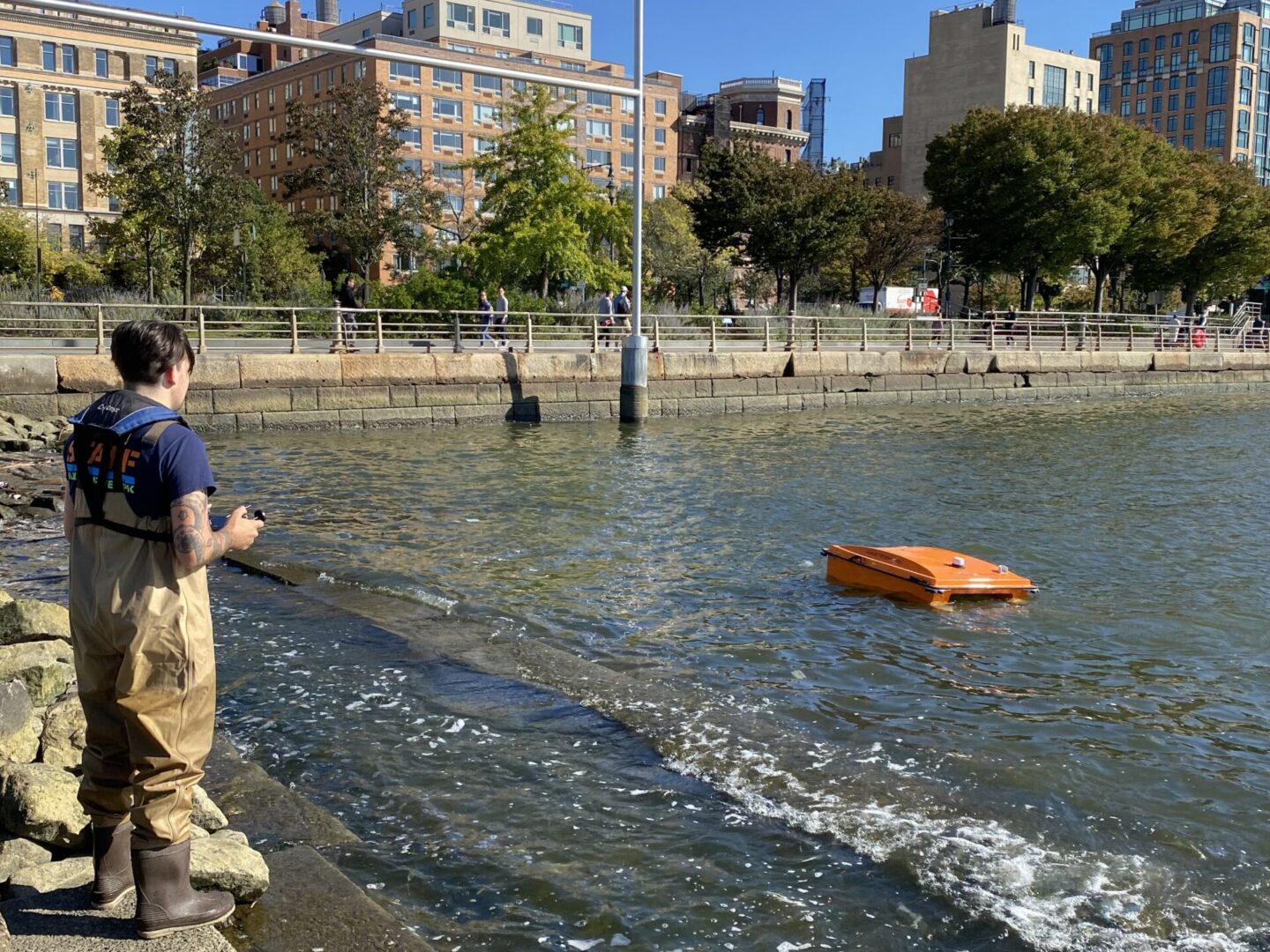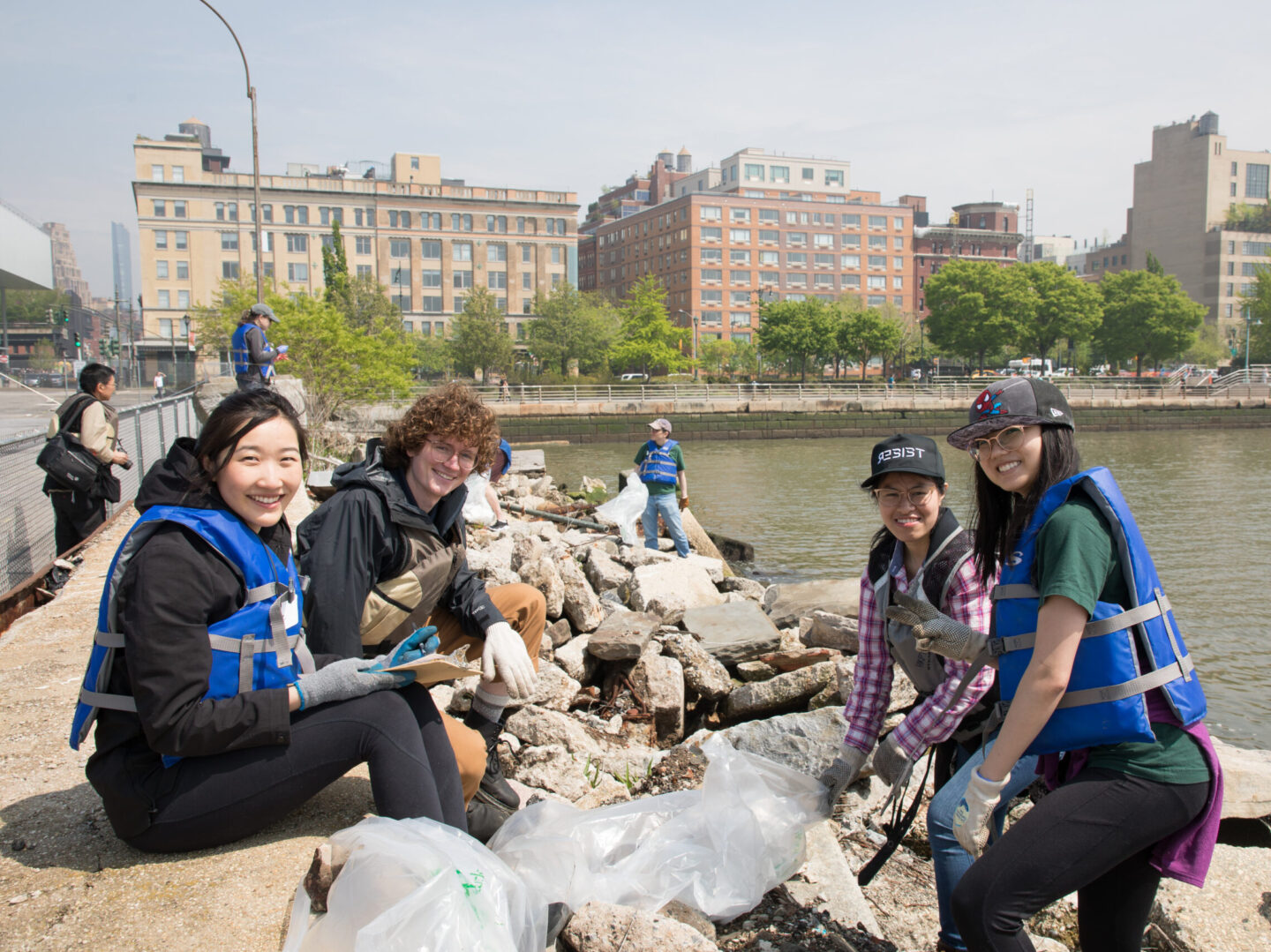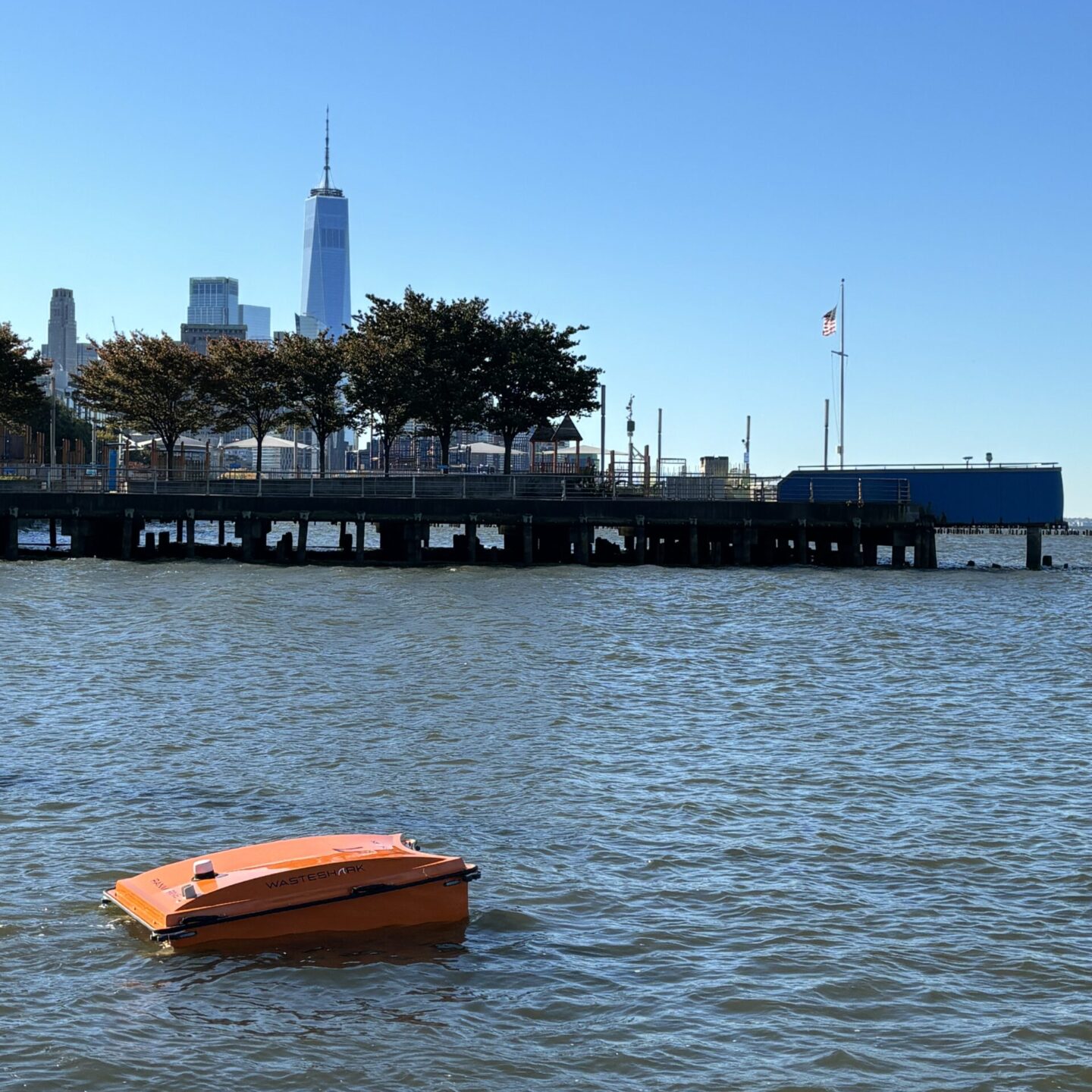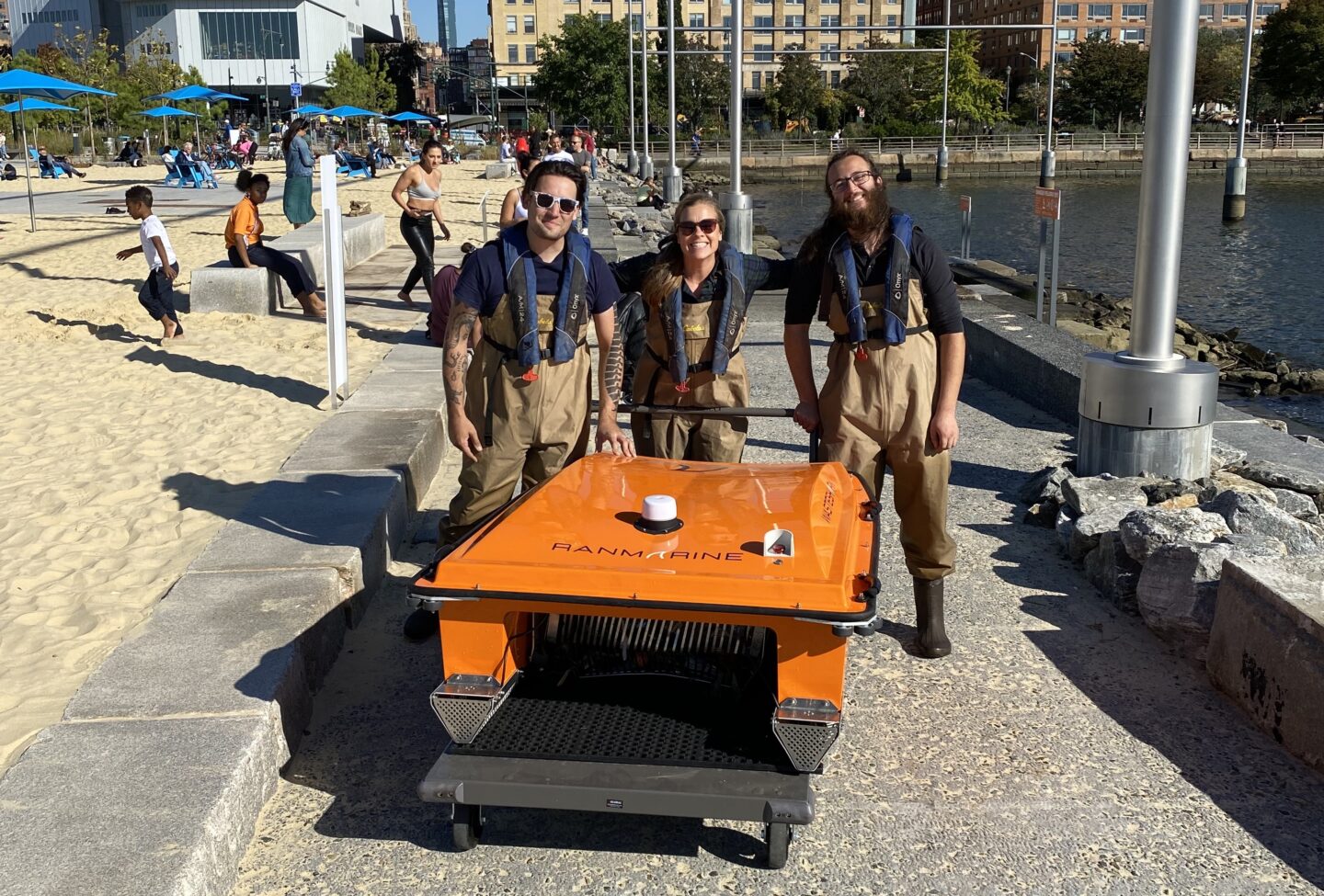A new high-tech helper is joining our River Project team for shoreline cleanups in Hudson River Park — behold the WasteShark. Modeled after the whale shark — earth’s biggest fish — the WasteShark is a filter feeder of a different variety.
This remote-controlled aquadrone can remove hard-to-reach plastic pollution from the Park’s Estuarine Sanctuary waters. Similar to how a whale shark consumes plankton, the WasteShark glides at the surface, straining out floating debris from River water into its inner basket.
We asked our Park community to suggest names for our WasteShark, and we received more than 300 clever suggestions. We put the finalists up to a vote, and the results are in. We are thrilled to introduce you to…
Gulp!

Gulp in action off the southern shoreline of Gansevoort Peninsula, operated by River Project staffHere are just a few reasons why we’re excited to introduce you to this new tool — and information about how you can meet the WasteShark at an upcoming shoreline cleanup.
The WasteShark is another tool to help fight plastic pollution in our local waterways.
If you’ve ever seen floating debris in Hudson River Park, it probably originated from streets and sidewalks further inland. That is because New York City operates on a combined sewer system, where water from the sewers is treated alongside water from our homes, businesses and other uses. During rain events, wastewater treatment plants become overwhelmed, releasing excess untreated water in waterways across the city, which is one source of plastics entering our Hudson River environment. After entering the Hudson River, debris floats and eventually collects on soft shoreline areas where land meets water, such as the Gansevoort Peninsula.

Since 2015, our River Project team has led shoreline cleanups where volunteers help count, categorize and remove marine debris from our waters. The WasteShark will help amplify the work of volunteers, collecting floating debris from the River which can then be brought on land to record data.
It allows us to collect plastic marine debris that was once out of reach.
Because much of Hudson River Park is elevated above a historic bulkhead, there are limited areas for in-water plastic pollution collection. Floating debris can be just out of reach from our shoreline access, and we’ve even tried using pool skimmers to capture these plastics, but we were never able to find the right tool for the job until the WasteShark came along.

By extending our reach, WasteShark enhances both our cleanup and research efforts, enabling us to remove more floating pollution in the river — and to collect more information for our ongoing plastic pollution research.
The WasteShark offers a new way for the public to join in our stewardship efforts.
This new tool showcases how technology can advance environmental stewardship. We’re excited to bring it to the public so visitors of all ages can witness that impact first hand — and experience the joy of watching a five-foot-long orange ROV consume river trash.

Getting the public involved in efforts to reduce plastic pollution is an essential tenet of our Park Over Plastic initiative, which brings together Park staff, vendors and community members to help shrink our plastic footprint and improve the health of the Hudson River.
We’re grateful that this project has been funded in part by a grant from the New York State Environmental Protection Fund through the Hudson River Estuary Program of the New York State Department of Environmental Conservation.
Want to meet the WasteShark in person?
Take part in a shoreline cleanup with our Blue Team! We have an upcoming event on Saturday, November 4 — space is limited, reach out to volunteer@hudsonriverpark.org to sign up.
Hudson River Park is not a city-run Park, and we rely on private funds for our programs, operations and maintenance. The generosity of community members like you helps make estuary education and Park sustainability efforts like this possible. Show your support.